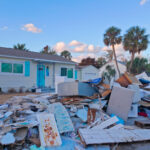S&P Global Ratings has placed its ‘B+’ financial strength ratings for Hochheim Prairie Farm Mutual Insurance Assoc. (HPFMIA) and its subsidiary, Hochheim Prairie Casualty Insurance Co. (HPCIC; collectively Hochheim) on CreditWatch with negative implications.
Hochheim, headquartered in Yoakum, Texas, only operates in Texas and is celebrating its 125th anniversary this year.
S&P said it believes the company has demonstrated a strong ability to rebuild its capital despite the timing and severity of Hurricane Harvey. As of October 2017, the company had net loss of $19.7 million, a $9.1 million deterioration from the previous year, and a 116.5 percent combined ratio compared to 111.2 percent.
In addition, as of October 2017 the company lost 28.4 percent of its capital, which is 12 points more than the 16.1 percent lost at this time in the previous year. This puts its capital base at greater risk from future events and pressures current capital-adequacy levels commensurate with its rating level.
The CreditWatch Negative reflects S&P’s concerns with Hochheim’s ability to maintain its current reinsurance coverage. Because of the company’s exposure to man-made and natural catastrophes in Texas, its ability to grow its capital organically is somewhat restricted.
Given the significance of Hurricane Harvey and the possibility of increased reinsurance costs, the company could be challenged to get a similar reinsurance program during the January renewal period, which could put additional pressures on our assessment of its capitalization.
Over the next 90 days, S&P plans to assess the company’s ability to replenish its capital levels organically and get coverage similar to 2017 to guide its assessment of the impact to net catastrophe exposure.
S&P said Hochheim’s ratings may be lowered by up to two notches in the next six to 12 months if the company is unable to replenish its capital and get adequate reinsurance protection, incurs additional losses that would materially reduce capital levels, or there is a change in the ratings agency’s view of the risk of regulatory intervention because of the typical weather-related losses that it suffers in the first half of each year and the inclusion of a catastrophe charge in the risk-based capital assessment.
Source: S&P Global Ratings
Topics Texas Agribusiness Reinsurance
Was this article valuable?
Here are more articles you may enjoy.


 State Farm Wins Dismissal of Class Action Over Xactimate Software
State Farm Wins Dismissal of Class Action Over Xactimate Software  More Floridians Moving Out Due to Housing, Insurance Costs, Cotality Report Says
More Floridians Moving Out Due to Housing, Insurance Costs, Cotality Report Says  Dog Bite Claims Soar in Frequency and Cost: Report
Dog Bite Claims Soar in Frequency and Cost: Report  Global Q1 Commercial Insurance Rates Drop 3%, but US Casualty Bucks the Trend
Global Q1 Commercial Insurance Rates Drop 3%, but US Casualty Bucks the Trend 

